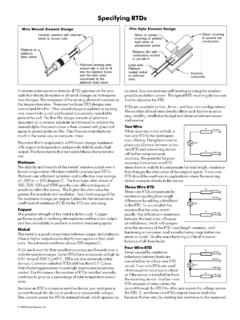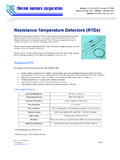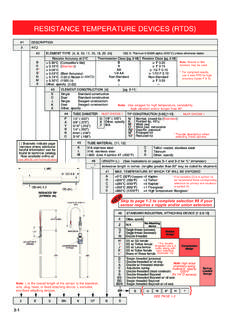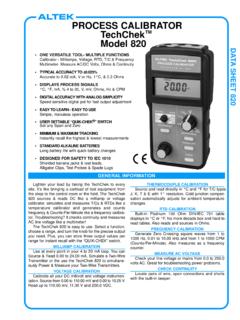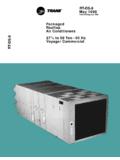Transcription of 2- 3- 4-Wire RTD Measurement - TI.com
1 2- 3- 4- wire RDT (Pt100 to PT1000)Temperature MeasurementRTD Sensorsmost common PT100; PT500; PT1000 RTD: resistance temperature device Linear resistance change with temperature Positive temperature coefficient wire -wound or thick film metal resistorOver Limited Temperature RangeAdvantages Accuracy available to + C High linearity over limited temperature range; ex. -40 Cto +85 C Wide temperature range: -250 C to 600 C (ASTM) 850 C (IEC)Disadvantages (mostly minor) Limited resistance range 100 to 1k (typically) Low sensitivity, about + / C for a 100 Pt100 RTD Requires linearization for wide range; ex. -200 C to +850 C Lead wire resistance may introduce significant errors Cost is high compared to a thermistorRTD SensorsAdvantages and disadvantagesUp to 10k , Down to 10 availableBut Wider Temperature RangeEVM Ultimate Temperature Sensor Measurement Solution Most Flexible Front End for a Wide Range of Industrial Sensors High Integration Without Compromising Performance Scalable SolutionsDevice Features: 2/4 Differentialor 3/7 Single-Ended True Bipolar or Unipolar 5V Max Data Rate 2kSPS Low Noise PGA: 40nV @ G = 128 50/60 HzSimultaneous RejectionMode (20 SPS)On-Chip Integration.
2 Low Drift Internal Reference(10 ppm/ CMax) DualMatched Current DACs(50 1500 A) Oscillator, Temp Sensor, Burnout Detect 4/8 GPIO s 16-Bit version: ADS1147/48 coming 2Q 09 Temperature Management RTDs, Thermocouples, Thermistors Flow/Pressure Measurement Industrial Process ControlADS1248 EVM20/28-Pin TSSOPADS1247/4824-Bit, Complete Temperature Measurement ADCADS1246/47/48 Analog Input Multiplexer CircuitIDAC1 and IDAC2 can be sequent-ly connected to each of the eightinput channels and at the sametime all these inputs can be se-quently connected to the PGA input. This allows to drive theexcitation current to one input and measure at the same time thevoltage drop on this 2- wire RTD applicationAdvantage: Very simple RTD connection.
3 IDAC generates the sensorexcitation and the referencevoltage. Noise and drift of the Refvoltage are correlated and therefore canceled. Only one current source no mismatch. Up to 7 RTDs are possibleDisadvantage:Voltage drop across the RTD connectionAdvantage: IDAC generates thesensor excitation and the reference voltage. Noise and drift of the refvoltage are correlatedand therefore canceled. Voltage drop across theline resistance arecompensatedDisadvantage: Needs two currentsources. Only IDAC currentmismatch matters. 3- wire RTD with compensationAdvantage: IDAC generates the sensorexcitation and the referencevoltage. Noise and drift of the Refvoltage are correlated and therefore canceled.
4 Voltage drop across the lineresistance are compensated. Allows complete utilizationof the input range, no offsetcaused by the RTD : Needs two current sources. Only IDAC currentmismatch matters. 4-Wire RTDA dvantage: IDAC generates the sensorexcitation and the referencevoltage. Noise and drift of the Refvoltage are correlated and therefore canceled. Voltage drop across the lineresistance are compensated. No IDAC current mismatchbecause only one currentpath is : Four connections are usedfor every sensor. Up to 3 RTDs are possibl










